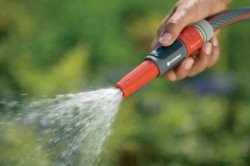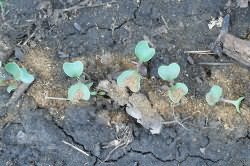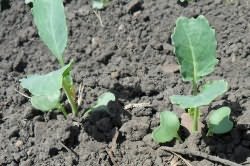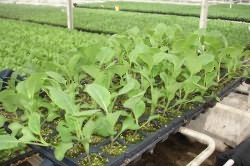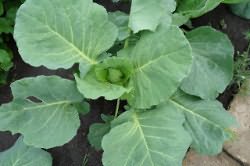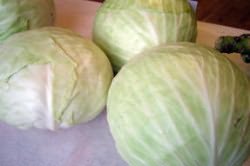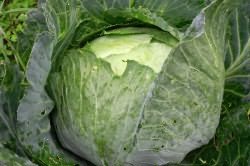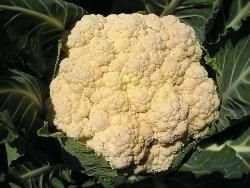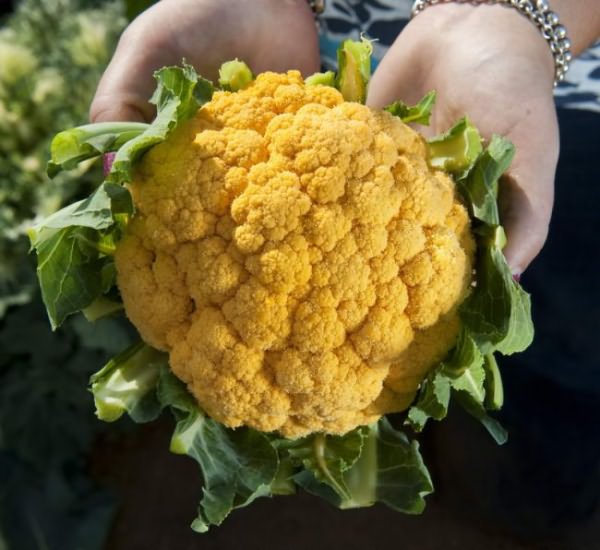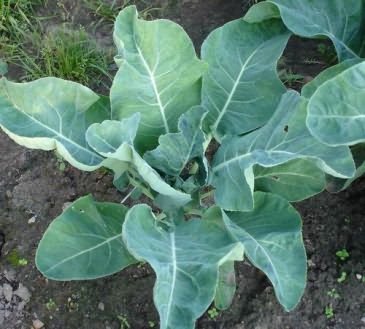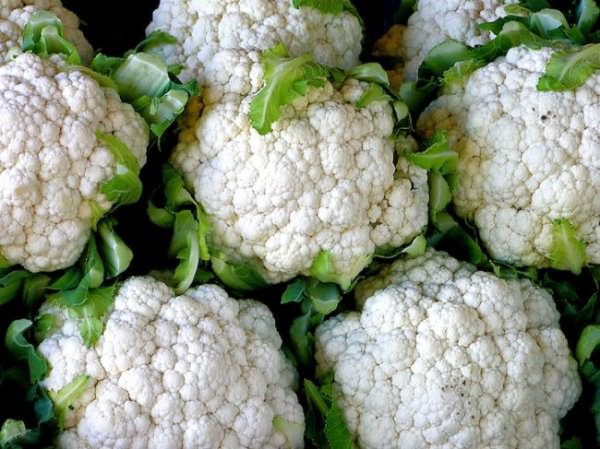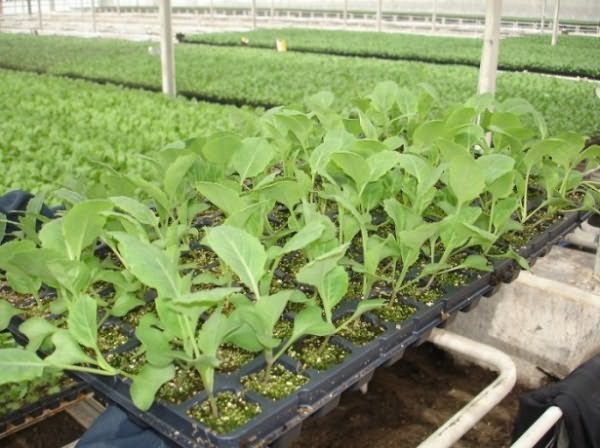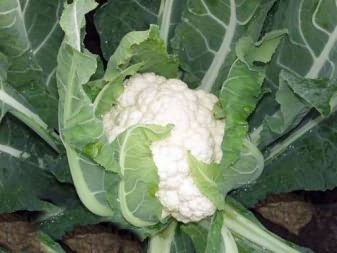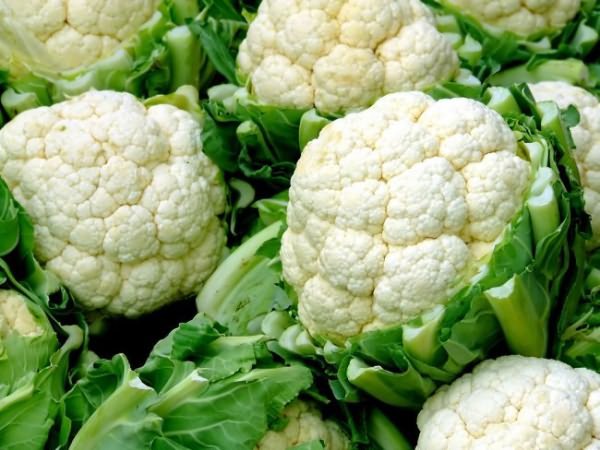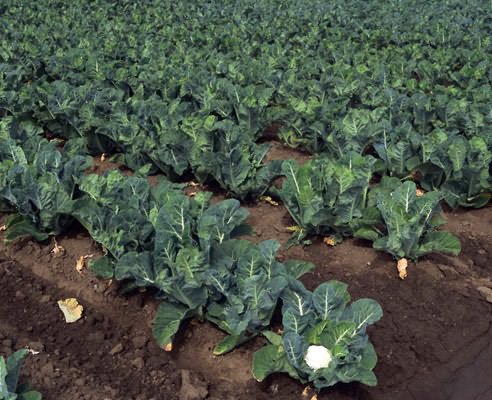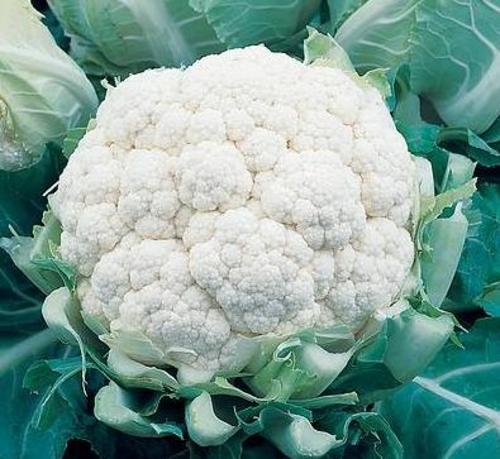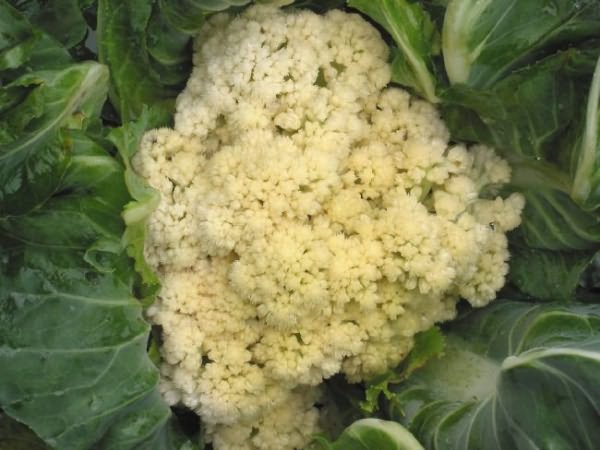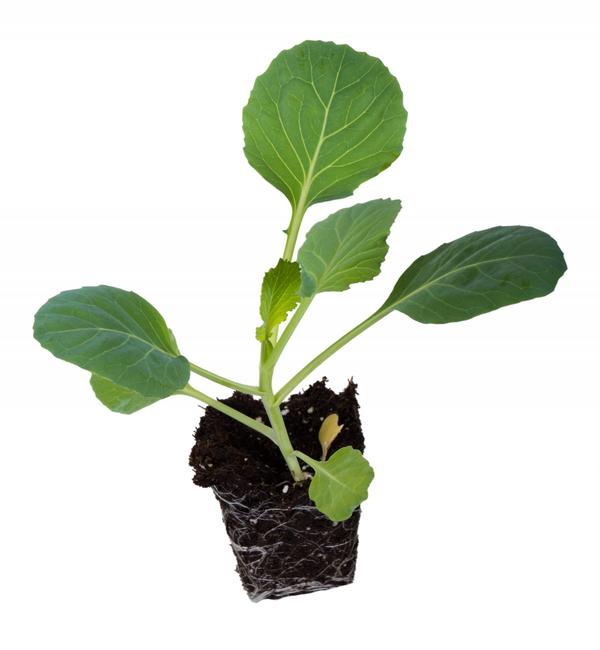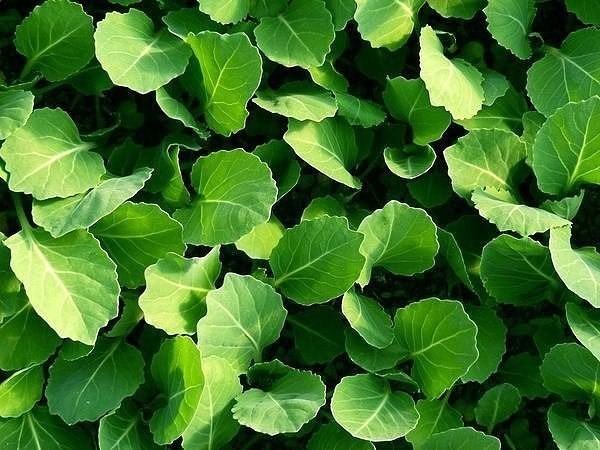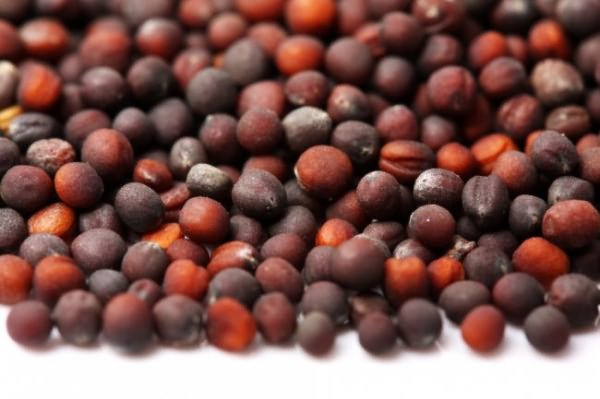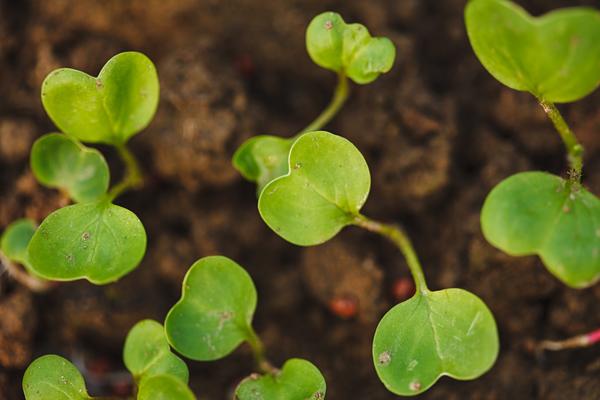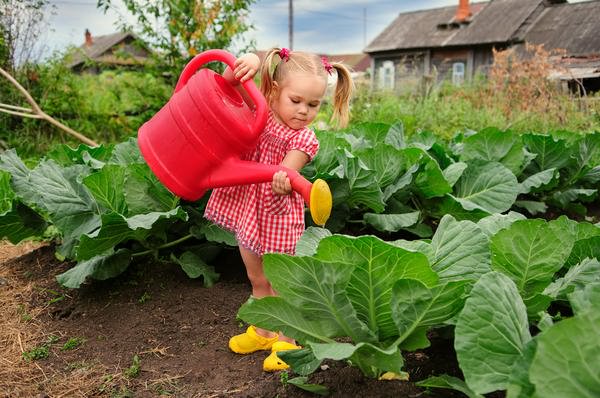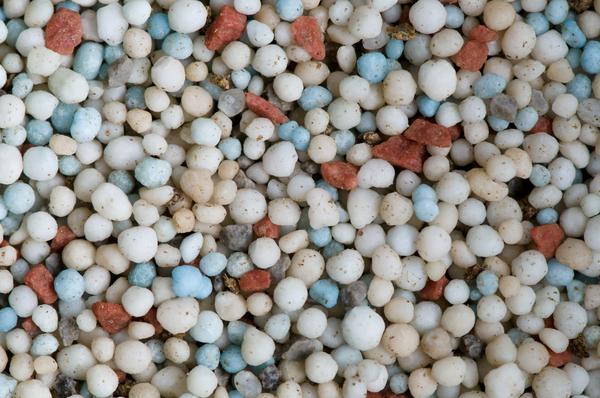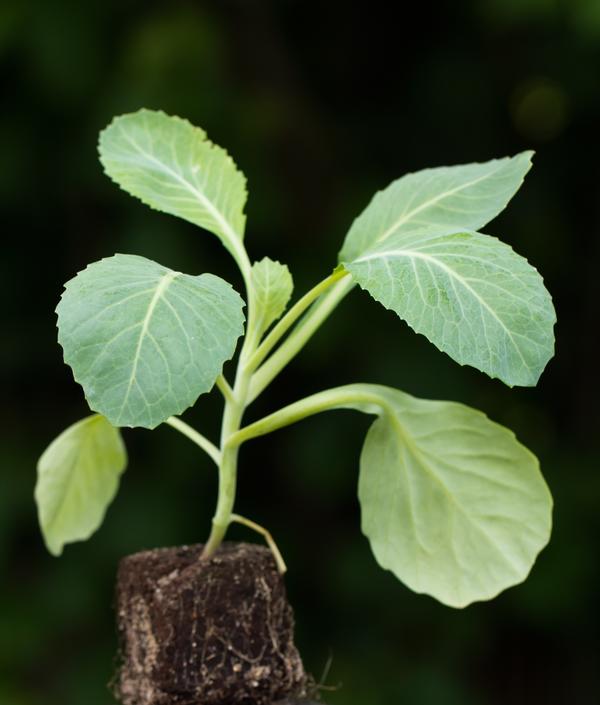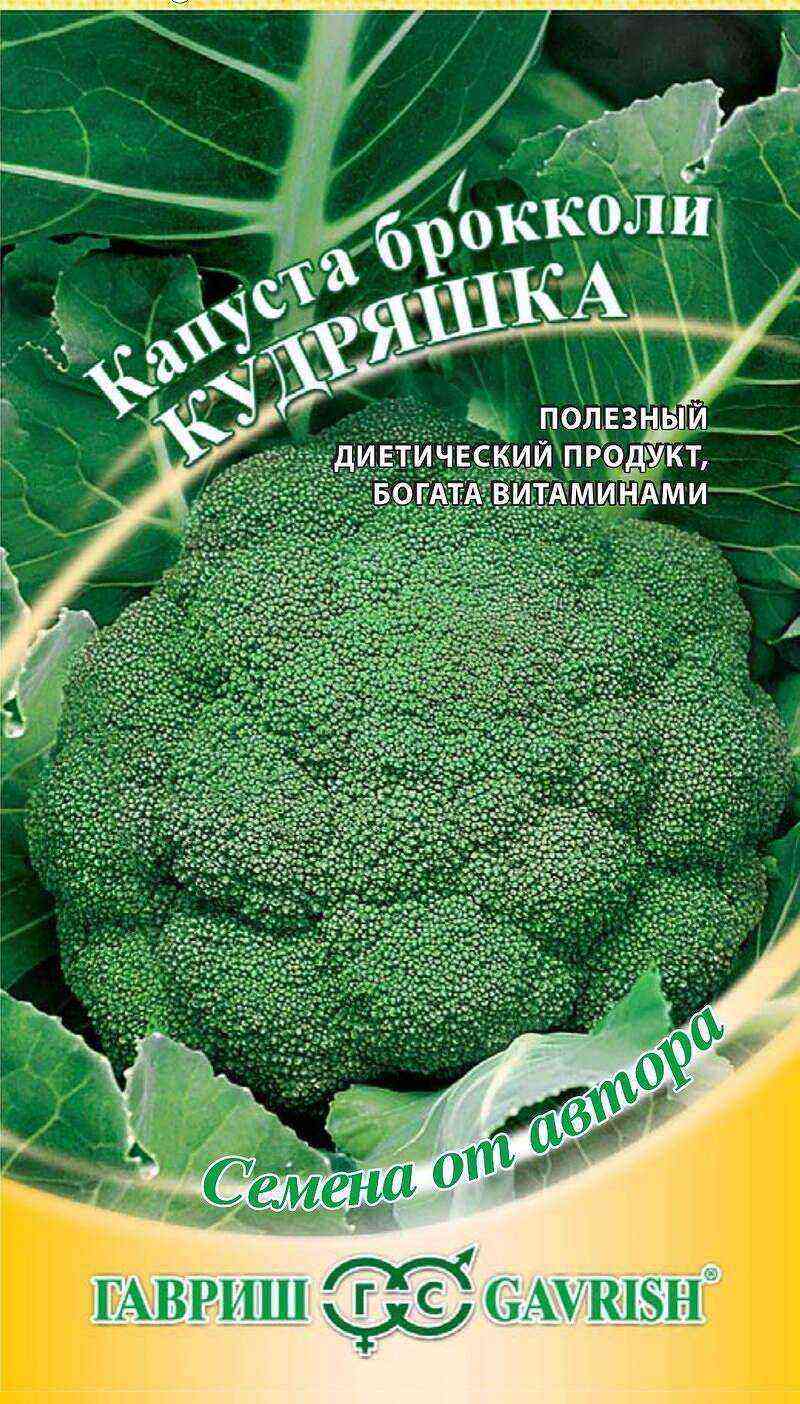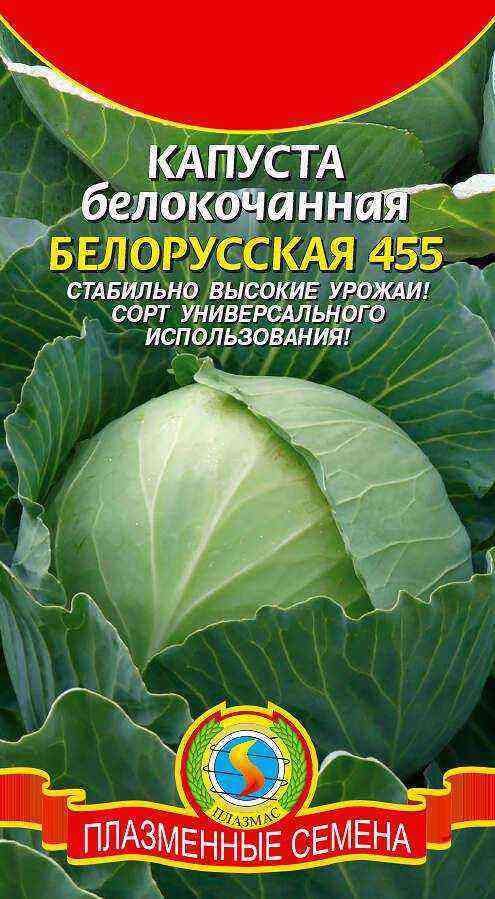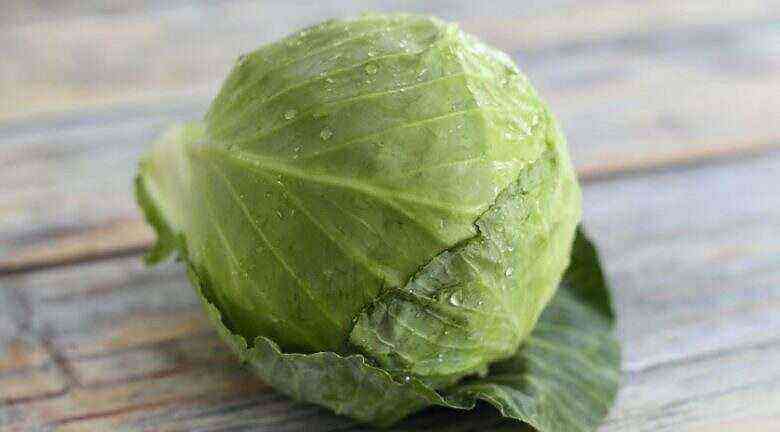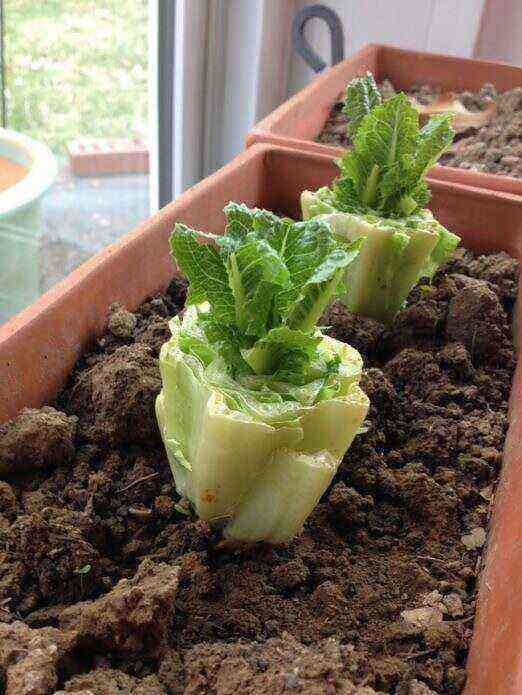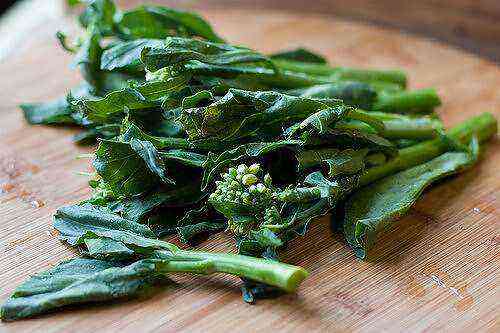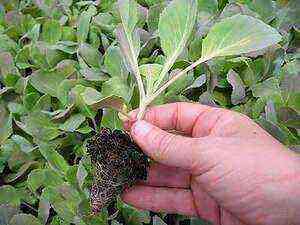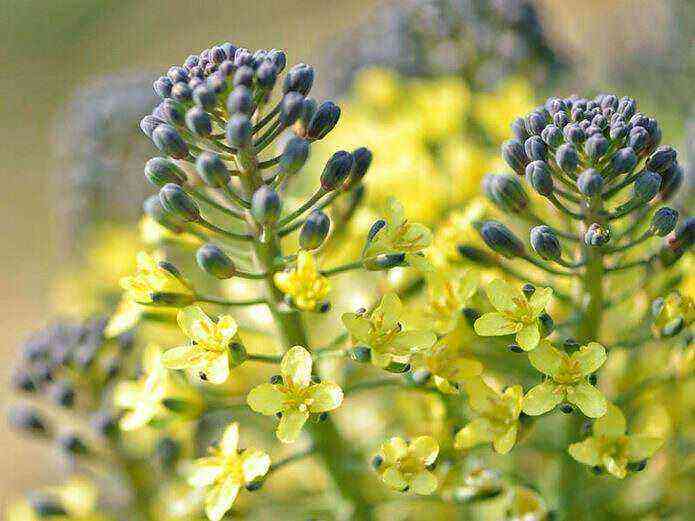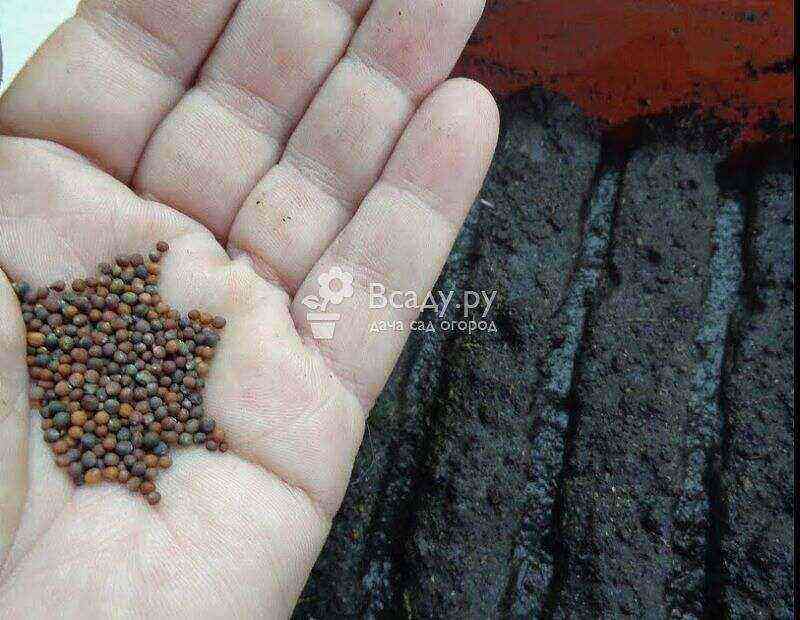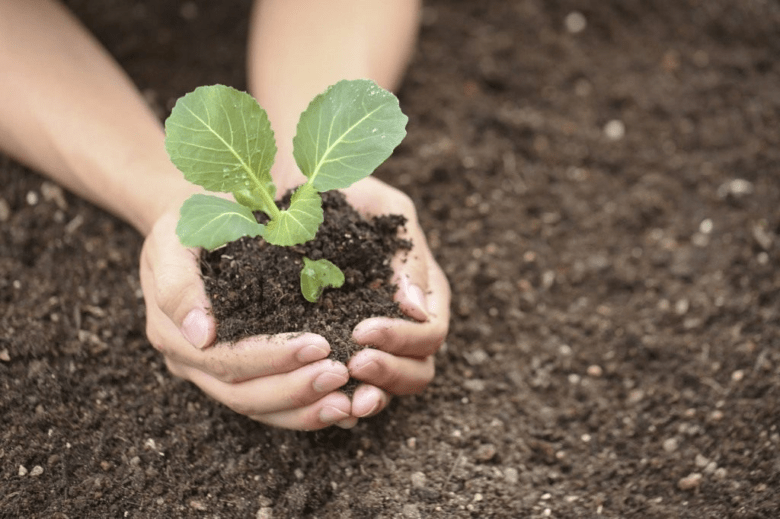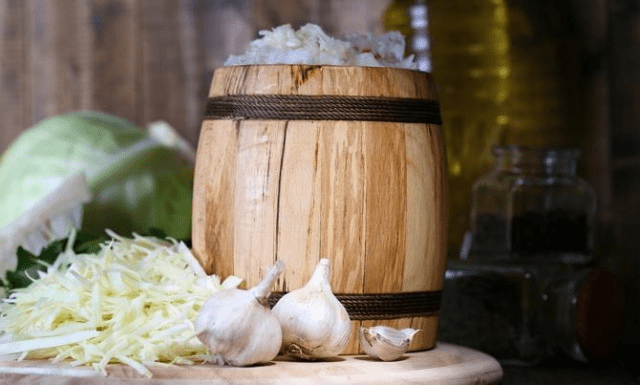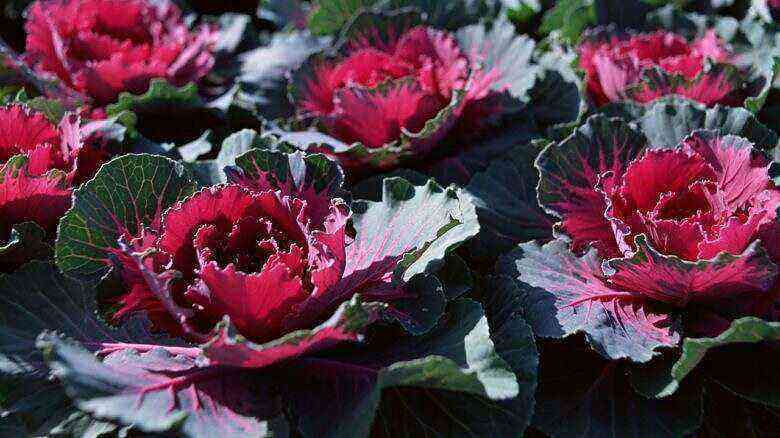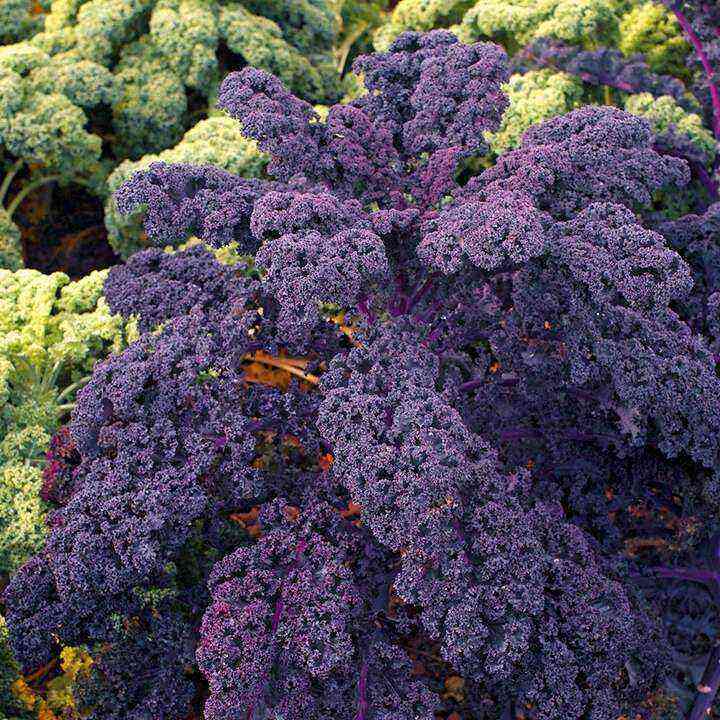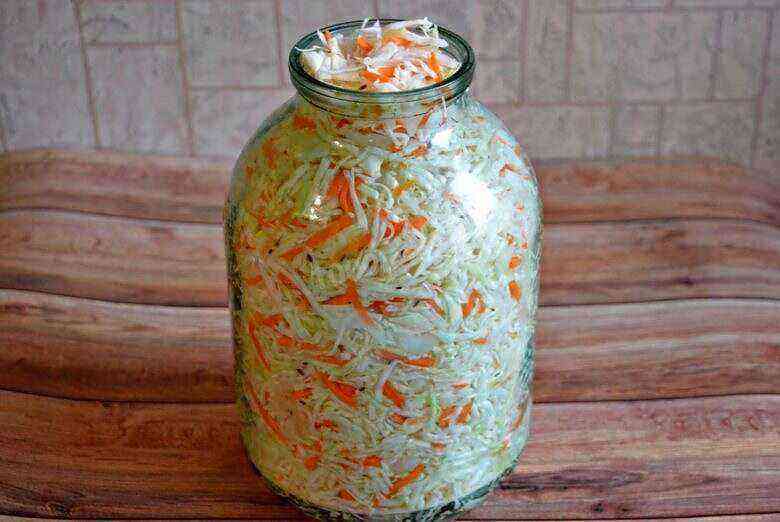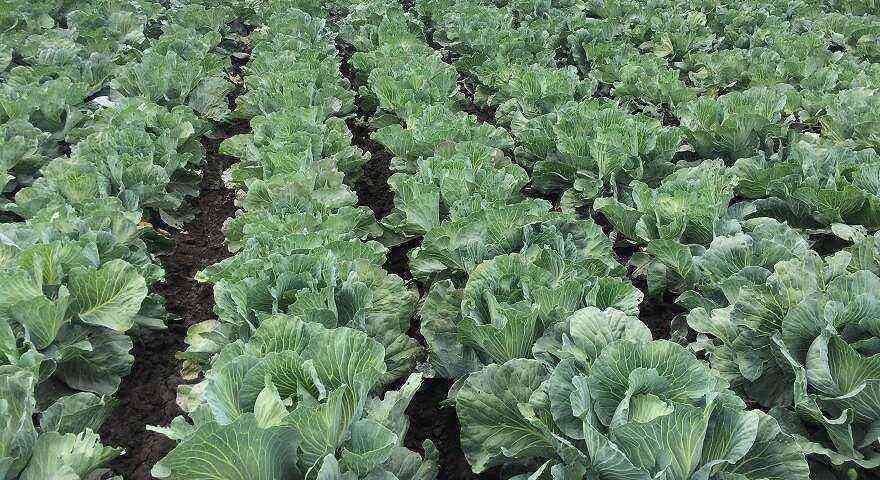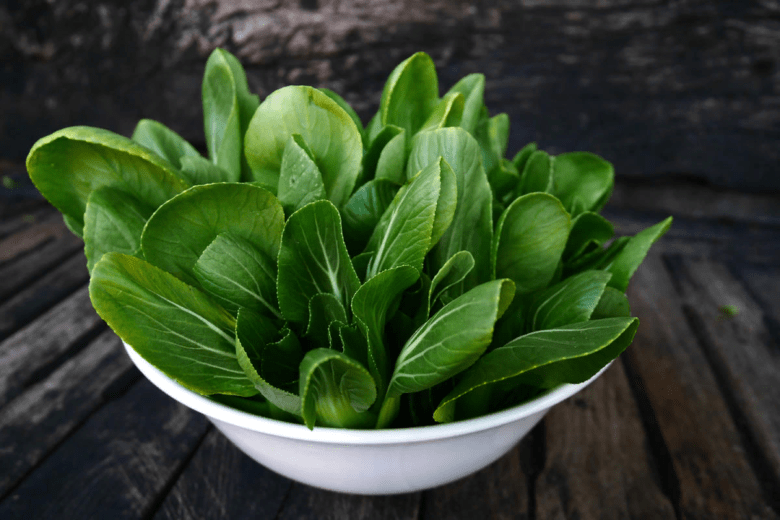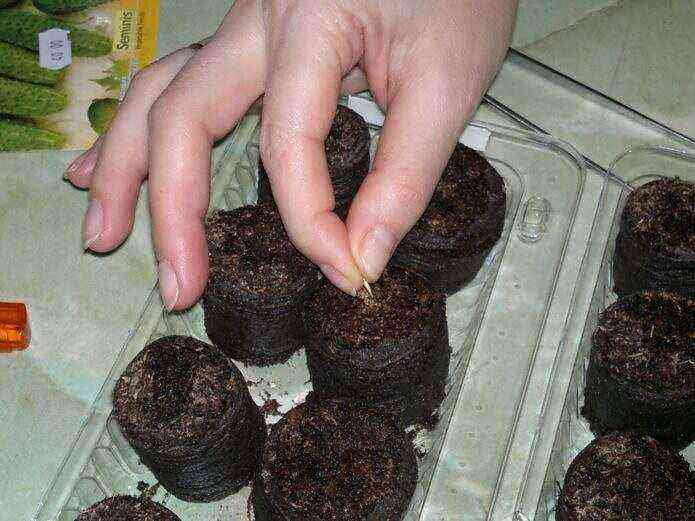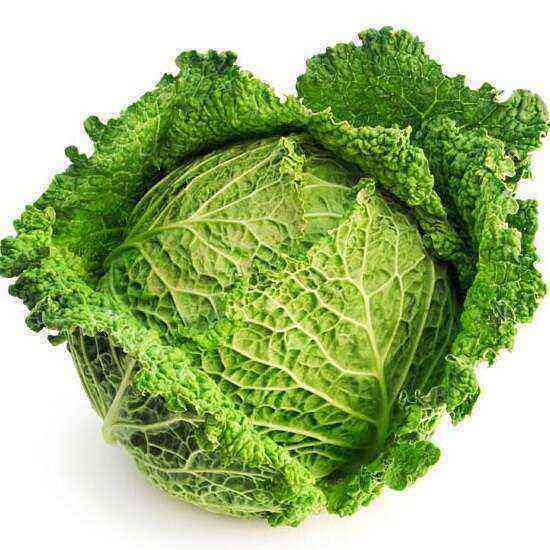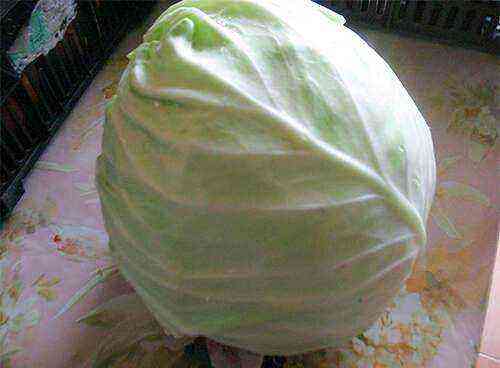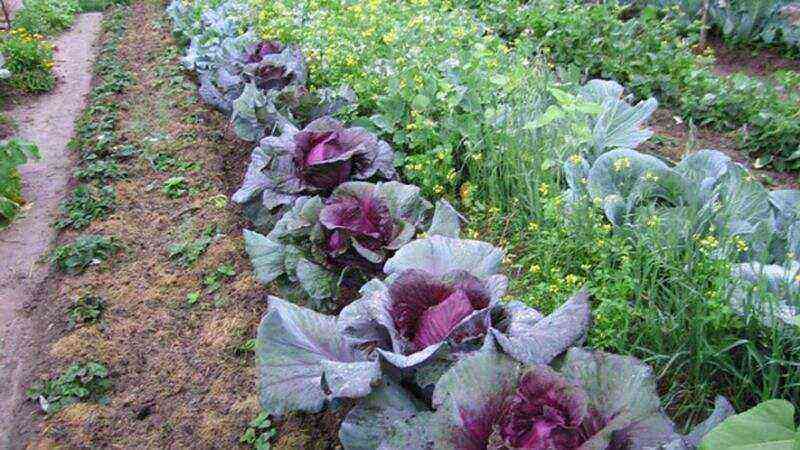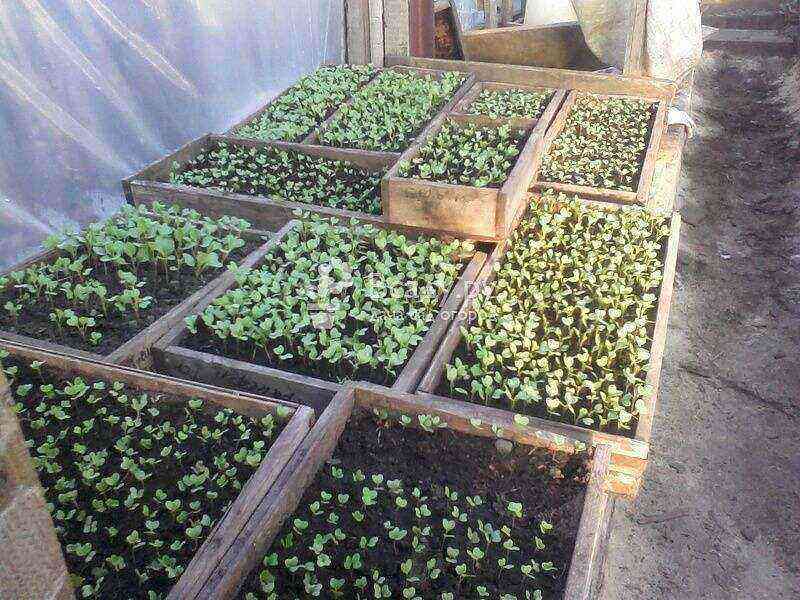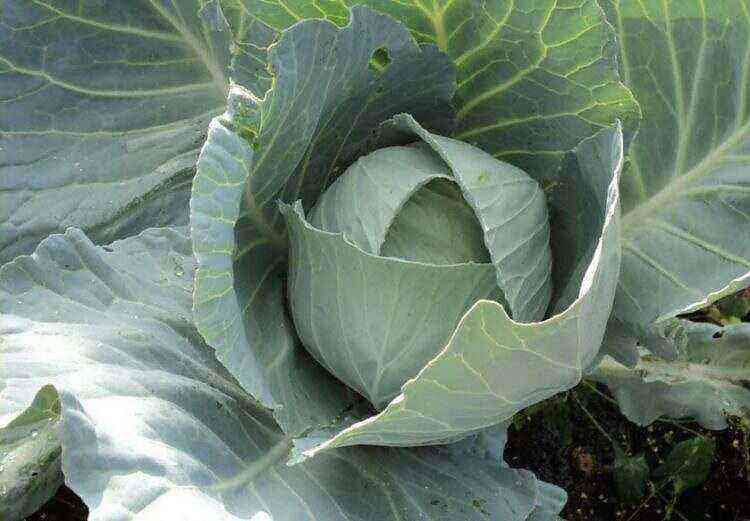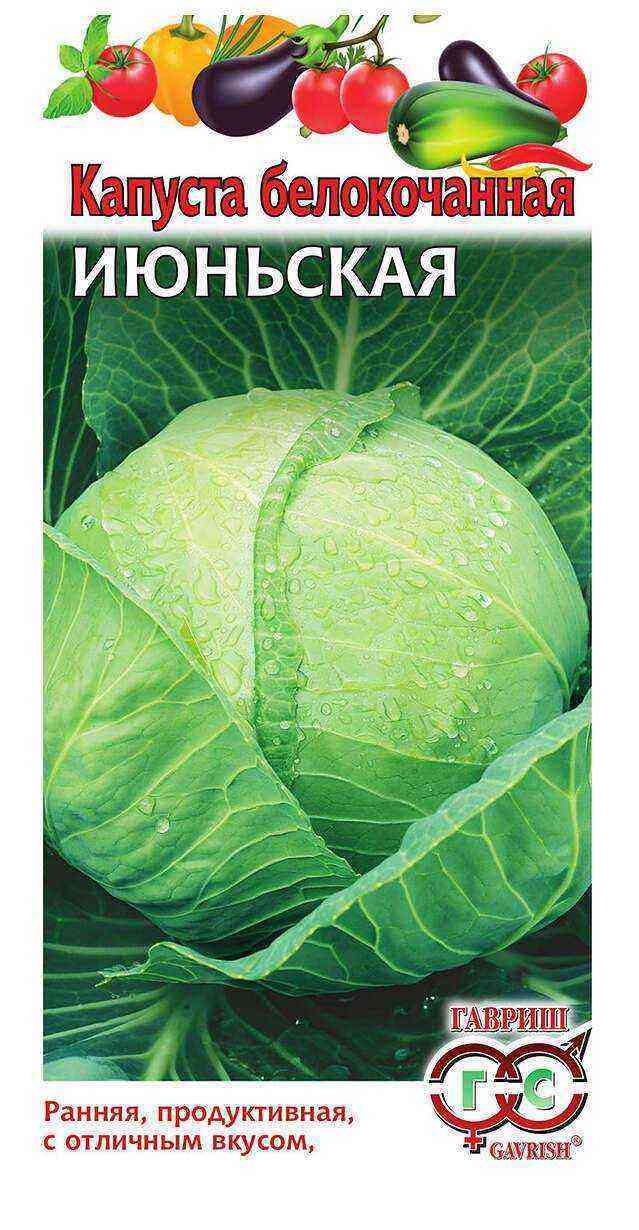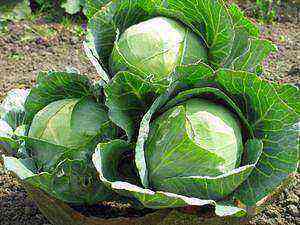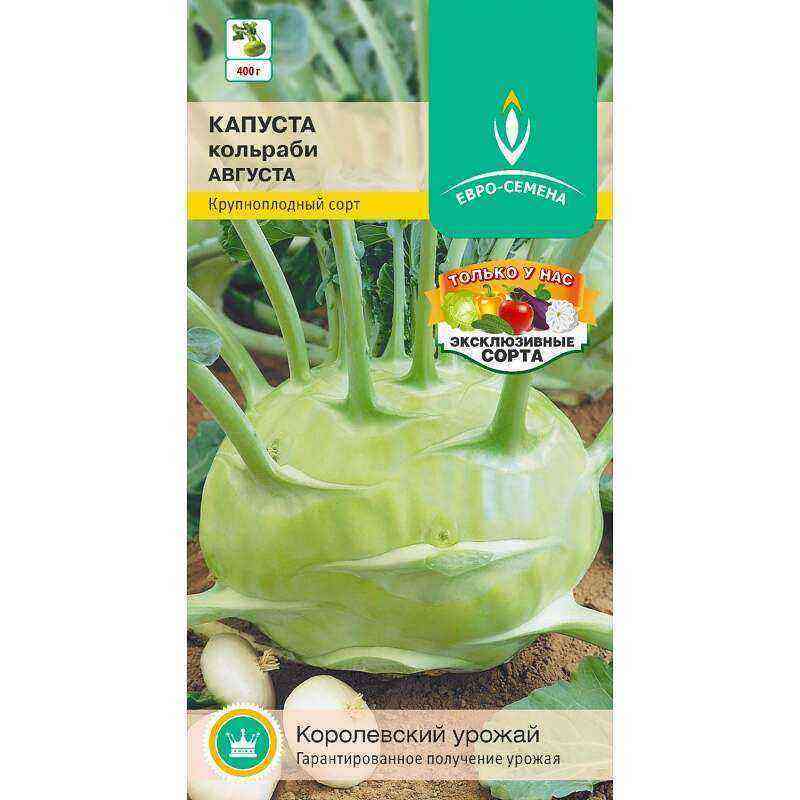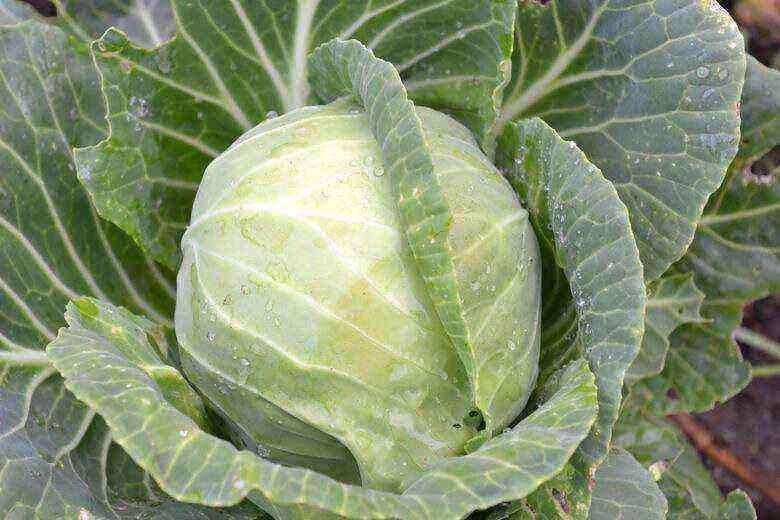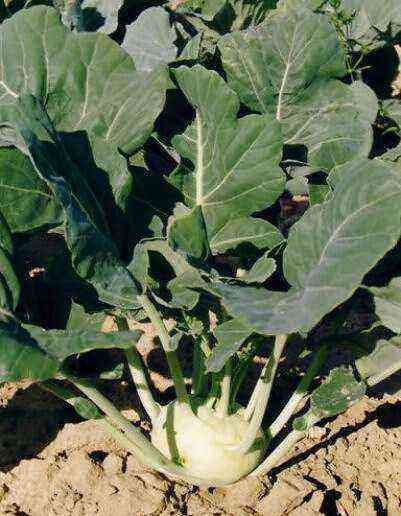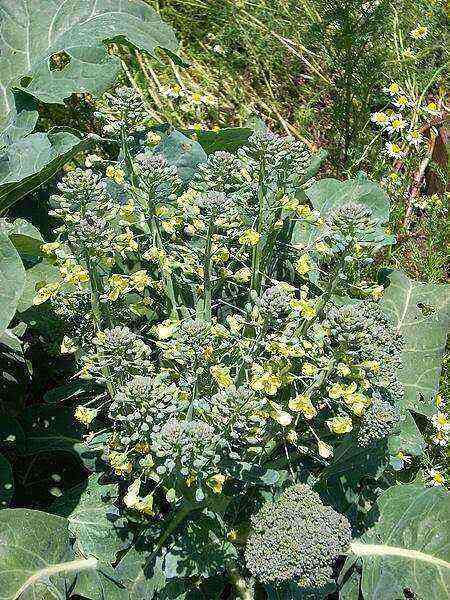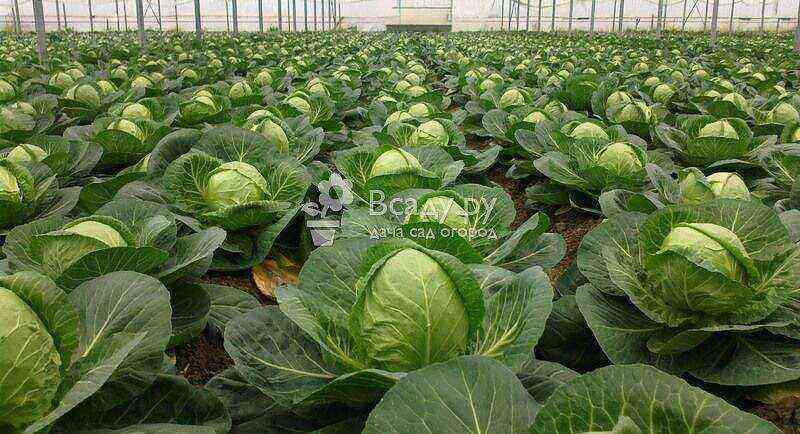Growing cabbage seedlings of different types
For growing cabbage seedlings, several techniques are used to make the harvest a success. It is customary to distinguish 10 different types of this culture. Each of them has separate varieties. Very often, cabbage is grown through seedlings. To do this, you need to know the specifics of sowing and observe all aging periods.
Cabbage is usually grown via seedlings. If the sprouts are strong and healthy, then it is safe to say that the harvest will be good.
It is important to know how to properly grow seedlings. To do this, it is necessary to produce high-quality, effective care for the sprouts, and then carefully place them in the garden or greenhouse.
Growing cabbage seedlings
In order to disinfect cabbage seeds, they must be immersed in hot water for 20 minutes.
The first step is to prepare the seeds. To do this, they are disinfected, that is, they are immersed in hot water for 20 minutes, then taken out and immersed in cold, boiled water for 2 minutes. Next, you should dry them. If you purchased the seeds from a reputable supplier or store, it is not necessary to decontaminate them, as the treatment has already been carried out. Thanks to this, the growing of seedlings will be faster.
Before planting, the seeds must be soaked for a day. The water temperature must be at least + 2 ° С. This procedure is needed in order to increase the frost resistance of the plant. Also, thanks to her, the seeds germinate better. In stores, you can often find special colored seeds that have previously undergone a training course. They don’t even need to be soaked before planting. However, it is after soaking that the germination of ordinary seeds can persist for 3 years. The time and characteristics of sowing should be compared with the variety of cabbage. It is also important to take into account the climatic conditions for the period of growing seedlings. The period of planting seedlings in the ground directly depends on this.
It is important to know all the intricacies of growing cabbage. To do this, determine its age, the period from planting seeds to planting them in a greenhouse. This period is different for each variety. For red and white cabbage, it is 50-60 days, for broccoli 40-45 days, for cauliflower 50 days, for Savoy cabbage from 30 to 50 days and for kohlrabi 30-35 days.
Table of the optimal sowing time for cabbage.
In this regard, it is necessary to observe the optimal disembarkation time. White and red cabbage are planted from March 15 to 25, late varieties of the same breed are planted on April 15. Broccoli and cauliflower should be planted in several crops: the first in mid-March, the second in late May. Brussels sprouts are planted in late April and kohlrabi in mid-March. The seedlings are kept in an open, lighted area. First of all, you should start planting white cabbage. Seeds of some breeds, for example, red and Savoy, must be planted in 3 stages with an interval of 4 days.
In order for the cultivation of seedlings to provide a good harvest, the biology of the culture should be determined. Cabbage is cold-resistant, light-loving, tolerates moisture well and makes high demands on the quality of the soil. For sowing, it is recommended to use soft seedling soil. It is important that it is not too loose. The main component that should be present in the optimal amount is peat. Its content in the soil should be at least 80%, sand about 5%, and soddy land about 20%. Often a humus mixture (compost) is added to the soil, this improves its quality and ensures good fertility.
Landing method “picking”
The “pick” planting method is the planting of cabbage seeds in boxes.
This method involves planting seeds in boxes. It will be necessary to prepare wooden rectangular boxes, the recommended height is 5 cm. They are filled with soil and small grooves are made, 1 cm deep. Seeds are placed at a distance of 2 cm from each other. From above, the seeds are sprinkled with soil and compacted. The box is usually placed on the windowsill if the air temperature is 15-18 ° C above zero.
On the 5th day, it becomes noticeable how the seeds germinate. After that, they are taken to a room with a low temperature, approximately + 10 ° C. This is necessary so that the seedlings do not stretch out. Then, when the seedlings have reached the age of 11 days, they are planted in small containers. Their size can be 6-7 cm. Containers with seedlings are stored at a temperature of 18 ° C for 3 days. After that, the air temperature must be reduced to +14 ° C.
If you are growing your crop at home, provide adequate lighting in your home. Cabbage is very demanding on light. Light favorably affects its development and protects the seedlings from lodging and stretching. Normal growth is also ensured. If you see that the seedlings are starting to stretch, this may indicate that you planted the seeds too close to each other or did not lower the temperature.
In order to fence off the seedlings from each other, special partitions are used, as an alternative, you can use planting trays. If you use them, put 2 seeds in each tray. After the seedlings are already visible, one plant, which is weaker, should be removed.
Other cultivation features
To grow seedlings, you need to remember about watering. He should be moderate.
To grow good seedlings, you need to constantly water and moisturize them.
It is important to observe light and temperature conditions and maintain optimal conditions for seedlings. It is recommended to ventilate the room more often.
It should be remembered that dry soil interferes with the growth of seedlings. Moisturizing is one of the most important tasks. Do not forget that excess moisture is dangerous. This can cause the roots to rot, and the plant will die as a result. Lack of light in the room usually leads to stretching of the plants. The high temperature also promotes upward pulling.
Seedlings must be hardened. Thanks to this, it becomes frost-resistant. Crop rotation must be observed. This will help protect the seedlings from pests and disease. Cabbage should be grown in one place no more than 2 years. The site must rest from planting for at least 3 years. After the cabbage has been harvested several times, it will be good to plant beets, potatoes, tomatoes or cucumbers in this area.
It is not recommended to grow cabbage after turnips, radishes, lettuce, turnips and radishes have been planted on the ground earlier. In order to grow cabbage, you can use different types of soil: loamy, sandy loam, sod-podzolic and neutral. Soils with a high clay content are unsuitable for use. Cauliflower and broccoli yield good yields even in clay-rich soil. The area where cabbage will be planted should be well lit, spacious and free.
Organic substances can be used as fertilizer, for example, compost, manure. Wood ash is often used. Fertilizers are applied for 1 year. Provide more planting space if possible. If you will be using a narrow bed, for example, less than 1,5 meters, the seedlings will need to be distributed in 1 row. However, some species can be planted in 2 rows. In some cases, cabbage is planted in a checkerboard pattern. This ensures good germination.
Methods for growing white cabbage
Cabbage is native to North Africa and the Mediterranean. Cabbage has been cultivated and eaten even before our era. This vegetable was cultivated in Ancient Rome and Ancient Greece. At the beginning of our era, cabbage spread across the globe. It was cultivated in Transbaikalia and the Caucasus, from where it came to Russia.
White cabbage contains a large amount of trace elements and vitamins, which are very useful for humans.
This plant contains a large number of trace elements and vitamins that are useful for humans. Cabbage contains magnesium, calcium, potassium, phosphorus, iron, etc. It is believed that this is the only vegetable that contains an anti-ulcer factor, so it can be used to prepare a variety of dishes that have a beneficial effect on the human gastrointestinal tract. This vegetable has many medicinal properties.
Cabbage of various types occupies 25% of the area occupied by vegetable crops in our country. White cabbage occupies 98% of the area allocated for this crop.
White cabbage growing technology
There are seedling and non-seedling methods of planting cabbage. The seedless method is acceptable for the Central Black Earth Zone and the Far East. In the southern regions of Russia, winter crops are used. For large areas of cabbage cultivation, a technological map of the cultivation process is drawn up.
Seedless cabbage growing technology
Seeds sown directly into the soil develop and form a root system that grows deep into the soil. This increases their resistance to moisture deficit. The soil for seedless sowing should have a light granulometric composition, be highly fertile and free from weeds.
Seeds are used for early and late maturing varieties. In the southern regions of the Non-Black Earth Region, late varieties are also grown. Sowing with a seedless method is carried out in early spring, when the soil is sufficiently saturated with moisture due to autumn and spring rains.
Sprinkle cabbage shoots with tobacco dust to protect against cruciferous fleas.
In the northern regions, due to the short growing season, sowing is carried out as early as possible. In the south, depending on the expected harvest time, from the beginning of April to the end of June. The seeds are calibrated and kept in water with a temperature of 50 ° C for about 20 minutes for disinfection. Then cool quickly.
For mechanized sowing, cabbage seeds are mixed with dry granular superphosphate. Superphosphate has a positive effect on the development of the root system of the plant and allows you to make the sowing more even.
In small ancillary plots, cabbage is sown manually. Dig holes along a stretched cord and sow 5-6 seeds in each. Then mulch with sawdust or humus. This protects the soil from crusting. The row spacing is made 60 or 70 cm.If the square-nesting method is used, a 60×60 or 70×70 cm scheme is used.
The planting depth of seeds should be 2-4 cm. If the seeds are planted at a shallower depth, germination of seedlings will be delayed. The top layer of soil dries out rather quickly, and the seeds lack moisture. When planted too deep, seedlings are more difficult to break through, and they turn out to be weak and sparse.
Young cabbage should be thinned out.
As soon as shoots appear (second or third true leaves), the excess plants in the holes are removed. At the first thinning, two shoots are left, at the second one, one more developed. Remote seedlings can be transplanted into thinned areas. In places where the seeds have not sprouted, seedlings are transplanted with mandatory watering.
For normal growth and seedling formation, it is necessary that the soil is constantly moist. When replanting seedlings until complete engraftment, watering is done every day, and on hot days, 2 times a day: in the morning and in the evening. In the future, watering is reduced to 2 times a week. With manual watering during emergence, 1-2 liters of water must be poured under each plant. During the setting of heads of cabbage, the rate is increased to 3-4 liters.
Watering along shallow furrows with gravity water in the presence of a slope is carried out for 2-6 hours with a pencil-thick jet (0,2-0,5 l / s). In the absence of a slope, irrigation is carried out along deep furrows (20-25 cm) at a rate of 1-2 l / s until the contours of the wetting of adjacent furrows merge.
Heads of cabbage of mid-season varieties begin to develop in August, intensive growth occurs in September. Harvesting is carried out in mid-October, preferably with light frosts, which do not harm the cabbage, but contribute to better sugar formation.
For better growth and increase in the yield of cabbage, 2-3 additional dressings are made. The greatest need for feeding appears during the growth of leaves and the creation of heads of cabbage. In early spring, at relatively low temperatures, microbiological processes in the soil proceed slowly and plants receive nutrients in an available form in insufficient quantities. During the period of leaf germination, there is a special need for nitrogen fertilizers. To a greater extent, this applies to the northern and eastern regions of the country. The first feeding with nitrogen fertilizers is carried out 10-15 days after thinning the seedlings.
The first loosening of the soil and the destruction of weeds is carried out after the rooting of the planted seedlings and the appearance of mass shoots. Subsequent cultivation is carried out as needed during the growing season until the cabbage leaves close in the aisles.
The disadvantages of the seedless method include:
- careful selection of the site;
- additional soil preparation;
- increased seed consumption;
- additional pest and weed control measures;
- the need for careful care in the initial growing season.
Seedling technology for growing white cabbage
White cabbage seedlings must be grown in heated greenhouses,
The process of growing white cabbage by seedling method consists of the following stages:
- Soil cultivation.
- Fertilizer soil.
- Preparation and planting of seedlings.
- Seedling care: loosening, watering, hilling, fertilizing, pest, weed and disease control.
- Harvest.
- Bookmark for storage.
Soil preparation and soil fertilization
For early maturing varieties, more fertile soils are suitable, protected from the winds. Soil preparation begins with an autumn digging with a depth of about 20 cm. An autumn digging is an autumn tillage for sowing spring crops in spring. With it, you can regulate the degree of soil moisture. In the spring, the soil is plowed, and before planting, cultivation is carried out to a depth of 15 cm. The depth of plowing affects the development of the plant’s root system. The earlier the plowing is done, the higher the yield will be.
In the northern regions, on soils with a small thickness of the arable layer, as well as in areas with low relief and high humidity in the middle lane, cabbage is grown on ridges or ridges cut after spring plowing.
Fertilizing the soil only with mineral fertilizers, a good harvest of cabbage can be harvested on highly fertile floodplains, areas with low relief or drained peatlands. Organic fertilizers must also be applied to less fertile soils.
For cabbage, a slightly acidic soil environment has a beneficial effect.
For the normal development of a plant, it must consume 1 parts of nitrogen and 2,8 parts of potassium per 3,4 part of phosphorus. When fertilized with manure, cabbage assimilates 50% of phosphorus, 20% of nitrogen and 70% of potassium per year. Therefore, the missing potassium and especially nitrogen must be added in the composition of mineral fertilizers in the process of tying.
Cabbage does not develop well in acidic soils. A slightly acidic environment (pH 5-5,8) is more favorable for it. Lime is added to acidic soil once every 3-4 years.
Growing seedlings
White cabbage is a biennial plant. Its seeds appear in the 2nd year of the growing season. Before sowing, the seeds must be kept for half an hour in heated water (50 ° C). This will rid them of pathogens. Then the seeds are soaked in various growth stimulants. After the described procedures, you can proceed directly to sowing.
The fruits of cabbage, early sowing, reach a weight of 0,5 kg. up to 1kg.
Depending on the early maturity of the variety, the technology for growing white cabbage provides for the preparation of seedlings in different conditions and in different ways. Seedlings of early white cabbage are obtained in heated greenhouses with or without picking, as well as using pots and cubes. Mid-season and late varieties can be sown in unheated buildings and in open nurseries.
Early varieties of seedlings are grown for 45-60 days. In the middle lane, seeds are sown at the end of February or in March, in the southern regions in February. Mid- and late-ripening varieties are grown for 35-45 days. Seeds are planted to a depth of about 1 cm. After sowing, it is necessary to maintain a temperature of + 20 ° C until shoots appear. After their germination, the temperature must be lowered to +6 – + 10 ° С for 5-6 days. In the future, the temperature is maintained at room level.
A couple of weeks after sowing, when the first leaf appears, the seedlings are picked. Picking is the transplanting of shoots to a freer area, which increases the viability of plants in the future. Before picking, it is advisable to water the sprouts abundantly. This will help to make the picking process painless for the seedlings. It is better to transplant in cassettes or separate pots. In this form, the seedlings should develop until 5-7 full-fledged leaves appear. Then the cabbage is transplanted into open ground.
Cassette method of growing seedlings
There are new technologies and methods for efficiently growing seedlings. For example, special cassettes are used, made of polymer material with cells – 15-30 cm… The cassette for late ripening seedlings has 14 cells, for early ripening – 64 cells. The cassettes are filled with peat mixture. It is sown one grain per cell to a depth of 1-2 cm. Then the cassettes are placed on wooden blocks in heated greenhouses. In the process of cultivation, an optimal microclimate is maintained, feeding and watering are carried out.
No picking is required when using this method. Thus, seedlings are grown 30-50 days old. Important elements of the technology are the use of varieties with high germination and planting dates. They affect the size of the early harvest and the quality of the product.
When landing on open ground, the actual temperature of the air and ground is of great importance. Depending on the climatic zones, it is worth adhering to the following landing dates:
- in the steppe zone – March 10-20;
- in the forest-steppe zone – March 20 – April 10;
- in woodland – April 1-20.
Cassette irrigation technology has the following advantages:
- saving seeds;
- uniformity in the development and growth of seedlings;
- the safety of the root system during planting;
- disease and weather resistance;
- getting an early harvest, thanks to the preservation of the root system.
The disadvantage of this method is the increased complexity of the process.
Transplanting
When the cabbage is removed from the garden, the leaves that protected the fruit from dust and dirt are left in the garden.
Cabbage is planted as the first crop in a crop rotation and must grow on a new plot every year. It is desirable that its predecessors are potatoes, cucumbers, onions, tomatoes or legumes. For late and medium varieties – tomato, carrot, beet, clover layer. It is possible to plant the vegetable again in the same area only after 3-4 years, especially if the soil is acidic. It is also not recommended to grow cabbage after turnips, rutabagas, radishes, since these vegetables are susceptible to damage by the same pests and the same diseases.
In open ground, cabbage is planted depending on the climatic conditions of the region during May. Planting is carried out in the late afternoon or in sunny weather. After planting, the seedlings must be watered. The inter-row spacing on the beds should not be less than 60 cm.The distance between plants in a row for early maturing cabbage is about 40 cm, for mid-ripening cabbage – 50 cm, for late species – 60-70 cm. Seedlings are sorted before planting, discarding poorly formed plants and with signs of disease.
Holes are made in the marked area. The size of the hole is chosen to fully accommodate the roots of the plant. The roots should not bend upwards. Before planting, the holes are filled with water and fertilizers are applied to them. As a fertilizer, you can apply the following composition: one scoop of compost soil or humus, a tablespoon of ash and a teaspoon of superphosphate. It is advisable to water the well with a weak solution of manganese.
If the seedlings were grown in pots, when they are planted, the top edge of the pot should go 3-4 cm below ground level. The walls of the pot must be slightly torn, and the bottom removed to facilitate the feeding of the roots. Seedlings are poured to the first lower leaves. Further plant care includes watering in hot weather, loosening the soil and fighting diseases and pests.
Harvesting
Early cabbage ripens unevenly, picking it begins as the head reaches the weight of 0,5-1,0 kg. Cut off the head, leaving 2-3 cover sheets to protect it from dirt and damage. The cut is made in such a way as to exclude cleaning in the future. Late and middle varieties are usually harvested in one step. The length of the protruding stump should not be more than 3 cm.
If, after the main harvest, the remaining plants are well developed and healthy, a second crop can be harvested. The remaining heads are fed with nitrate (40 g per 10-15 plants). In the axils of the leaves, 1-2 buds are left, the rest are removed. When the heads are formed, watering is carried out 2-4 times. After the heads reach commercial sizes, a second collection is carried out.
If long-term storage of cabbages is expected, the collection is carried out as late as possible, but avoiding freezing the product. At low temperatures, physiological processes in vegetables slow down. Surface freezing does not reduce the quality of cabbage, but it is necessary to cut the cabbage after thawing in the field, otherwise they will rot during storage.
Growing cauliflower: seedlings, planting and care, varieties
Categories: cabbage
Many gardeners make a big mistake by not watering the cauliflower. This vegetable does not tolerate drought We have already talked about ordinary cabbage, and many gardeners ask themselves the question: “How to grow cauliflower?” Despite the obviousness of the process, mistakes in growing this vegetable very often do not make it possible to get white, strong, juicy, tasty heads. Today we will tell you how to choose the best cauliflower variety, planting, how to care for cauliflower and store in winter.
The best varieties of cauliflower
These varieties are suitable for growing both in the Moscow region and in the Urals and Siberia. The question of when to plant cauliflower depends on the particular cultivar chosen.
Early ripening varieties
Early Gribovskaya 1355, Movir 74, Guarantee (for open and closed ground).
Medium-Early Varieties
Pioneer, Bravo, Rocket, Mid-season Fargot.
Late-ripening
Skywalker F.
Features of varieties
Cauliflower does not grow well at high temperatures (above 25 degrees), but Amazing and Coleman varieties will give birth well in areas with hot climates.
Cauliflower grows poorly at high temperatures (above 25 degrees), but Amazing and Coleman varieties will give birth well in areas with hot climates
Cauliflower planting
Lately, there have been many hybrids of cauliflower (there is an “F” on the bag). They are more productive, but the seeds collected from hybrid plants do not retain varietal characteristics.
Considering that cauliflower can be sown and grown under a film cover, as well as sown at different times, then from May to October it can be on our table.
Cauliflower before planting in the ground
Lately, there have been many hybrids of cauliflower (there is an “F” on the bag)
Choosing a landing place
Choose a sunny, warm place for growing. In the shade of the cabbage, many leaves will grow, and the head will not form.
Cabbage loves high humidity in the air and soil. Loves loamy and sandy loamy soils, rich in humus, with a neutral reaction (pH 6,8 – 7,2). It can be planted after any crops except cruciferous crops. Prepare a bed for planting in advance: it is better to add manure or compost in the fall, and when planting – complex mineral fertilizers (nitrophoska, azofoska).
For planting cauliflower for seedlings, you can prepare a mixture: garden soil, peat, humus (in equal parts) with the addition of rotted manure.
Sow cauliflower in several steps.
Only strong, not overgrown seedlings can give a full harvest.
Cultivation of cauliflower seedlings
The first can be sown in a greenhouse or greenhouse already at the end of February in pots (put a few grains, and then remove weak plants) or rarely in rows. Only strong, not overgrown seedlings can give a full harvest. Crooked, thin, overgrown cauliflower seedlings will not yield a crop.
Seedlings of cauliflower
Choose a sunny, warm place for growing
Seedlings can be planted in the ground in early April. During this period, the danger of frost persists, so the plants can be covered with pieces of film, placing it on small arcs.
Plant in the open field according to the scheme: early varieties – 40 × 50 cm, medium – 50 × 50 cm, late – 60 × 60 cm.It is impossible to deeply deepen the seedlings of early varieties.
The most reliable are medium early varieties Bravo, Pioner, Raketa, etc.
Small beds can be covered with perforated film, placing it on arcs so that the film does not distort the seedlings. This will keep the cauliflower away from the cabbage fly as well. Before planting in the ground, the cauliflower seedlings must be gradually hardened.
In open ground, you can sow cauliflower periodically after two to four weeks. The last sowing can be done in late June – early July. The sowing time is influenced by climatic conditions, as well as the variety.
The most reliable are mid-early varieties Bravo, Pioner, Raketa, etc. Late varieties should not be planted, as they often do not ripen in our climatic conditions.
The sowing time is influenced by climatic conditions, as well as the variety
In open ground, you can sow cauliflower periodically after two to four weeks. The last sowing can be done in late June – early July
Under favorable conditions, cauliflower can be harvested in a greenhouse after 60 to 90 days, depending on care and variety (early, medium and late). Indoors, you can grow varieties with a short growing season (Rapid, Guarantee).
Such a mistake is often made: overgrown cauliflower seedlings are planted when it already has 6 – 8 leaves.
If she had been planted on time, then by this time the tying of the head would have already begun. You won’t get a good harvest from overgrown seedlings. Therefore, when sowing seedlings (especially the first), you need to calculate whether you can plant it on a garden bed that has not overgrown, after 30 – 35 days. In early spring, the soil has not yet warmed up enough, the roots will be cold, and the cabbage will not grow well.
The market usually always lacks cauliflower seedlings in the spring, and summer residents indiscriminately buy overgrown, crooked, thin, pale seedlings. From such seedlings, too, is of little use.
Features of growing cauliflower
Hilling
Carry out the first hilling two weeks after planting in the ground. After 2 – 3 weeks, hilling is repeated. It is advisable to feed the cauliflower several times, you can also feed it with a mullein.
In case of poor growth, feed and micronutrients. Boron and molybdenum are especially needed for cabbage.
Under favorable conditions, cauliflower can be harvested in a greenhouse after 60 – 90 days, depending on the care and variety (early, medium and late)
Feeding
Top dressing is especially needed if you know that the soil is poorly filled with organic fertilizers. In case of poor growth, feed and micronutrients. Boron and molybdenum are especially necessary for cabbage.
Watering
Many gardeners make a big mistake by not watering the cauliflower. This vegetable does not tolerate drought. A few days of drought and your work may be in vain. Very abundant watering must be done several times during the growing season. Cauliflower is very fond of sprinkling, from which the humidity increases and the temperature of not only the soil, but also the air decreases.
Indoors, you can grow varieties with a short growing season (Rapid, Guarantee)
If you do not have the opportunity to often water the cauliflower, then be sure to mulch the plantings with organic fertilizers. The moisture will not evaporate. Loosen unmulched beds more often.
Inexperienced gardeners often do not cut heads on time.
In the heat, the heads quickly separate into individual inflorescences. Such overripe cabbage becomes tasteless and lacks healing properties. Tip: you can shade the head by breaking one top sheet and placing it on the cabbage.
Pests of cauliflower
You can work, grow seedlings, but not get a harvest due to pests. In favorable years for them, pests can destroy the entire garden.
The cabbage fly lays its eggs on a stem close to the ground. Look closely at the stems and if you see small white testicles, then collect them and destroy them. If you notice a lot of stalks with cabbage fly eggs, then resort to using an insecticide. Sometimes you can do 1 – 2 waterings, sometimes you have to do them 3 times. It is necessary to pour the solution at the root, and not on the whole plant. If the heads began to be tied, then in no case should you process the cauliflower.
The cabbage moth lays eggs on young leaves. Caterpillars of the cabbage moth are so gluttonous that they can instantly destroy all young leaves. In this case, you have to treat the whole plant with insecticides (according to the instructions).
Plant solutions for pests
- To destroy the caterpillars of the cabbage whiteworm, cabbage scoop, cabbage moth, you can use milkweed infusion. Take 1 kg of milkweed leaves and roots, pour 4 liters of water, boil for 2 – 3 hours over low heat. Then strain and dilute with water, increasing the volume by 2 – 3 times.
- Burdock (burdock) can be used against caterpillars of cabbage whites, scoops and moths on all types of cabbage, radish, radish and other vegetable crops. Pick up a burdock, fill a bucket with it by one third. Fill with water to the brim. Let the infusion stand for three days, infuse. Strain, spray the plants 3-4 times at weekly intervals.
If the soil is acidic, don’t waste your time and seedlings. Keela will destroy the cabbage. Lime acidic soils, return the cauliflower to its old place after four years. Do not throw cabbage infected with keel into compost heaps. It must be burned or buried outside the garden.
We love and grow white cabbage everywhere, without it a vegetable garden is not a vegetable garden. In the middle lane, climatic conditions do not get tired of repeating the main rule to the gardener: if you want to have time to get a harvest in a short summer – these seeds are for seedlings.
Both early and mid-season, and late cabbage are grown mainly in seedlings. With mid- and late-ripening varieties, everything is simple and clear – they are planted for seedlings in April-May, right in a greenhouse or greenhouse. But the early cabbage has to be grown on the windowsill, prepare the ground, dive, harden. So many things … Today we offer you to understand the tricks and wisdom of growing cabbage seedlings in order to do everything right from the very beginning.
The timing of sowing seeds for seedlings varies depending on the region. For the middle lane, the approximate dates are as follows:
- early cabbage – March 10-25.
- late cabbage – April 25 – May 10.
Soil preparation for seedlings
The soil mixture for growing cabbage seedlings should be given special attention. Cabbage is too fond of various fungal diseases, the notorious “black leg”, and prevention, as you know, is the best solution to the problem.
A potting soil is prepared, as a rule, in the fall. Seedling soil options for cabbage:
1) 50% humus, 50% sod land;
2) 75% peat, 20% sod land, 5% sand;
3) 45% humus, 50% sod land, 5% sand;
4) 35% sod land, 35% humus, 30% peat;
5) 75% sod land, 15% ash, 5% lime, 5% sand.
In addition, you can always use the recipe for a universal highly nutritious soil for any seedlings: for 1 part of vermicompost or humus, 2 parts of coconut substrate. It is better not to take vegetable land (especially from the beds where cruciferous crops grew) for cabbage seedlings.
It is advisable to freeze the prepared soil mixture or spill it with a pink solution of potassium permanganate, and also add a tablespoon of ash for each kilogram of the finished soil. This will help prevent the development of diseases in cabbage seedlings.
Presowing seed preparation
Store-bought seeds can already be properly prepared for sowing. This will be written on the packaging.
If the seeds are brightly colored, no further manipulation is required.
If the seeds are of a natural color, but the manufacturer assures that they have been processed, it will be enough to warm them up: hold them for 20 minutes in hot (50 ° C) water, 5 minutes in cold and dry them.
If the seeds are self-collected, then besides heating, it will not hurt to pickle them. To do this, they are kept in the “Fitosporin-M” solution for 8 to 18 hours. For a day or two before planting, you can hold the seeds in one of the nutrient solutions.
Seeding of cabbage seeds on seedlings
Cabbage seeds can be sown in a box or in small cups if a subsequent pick is meant. If there is no desire or opportunity to dive, then choose larger individual containers, 7-8 centimeters deep. Any container for growing seedlings should have drainage holes, do not forget to check this, and if necessary, make them yourself.
The container is filled with soil by three quarters and must be spilled well; for germination, cabbage seeds need a lot of moisture.
You can sow two seeds in each glass, so that later you can choose a stronger seedling. In the box, grooves are made a centimeter deep and three centimeters apart, a seed is planted in them every one and a half centimeters. Then they lightly sprinkle with soil, do not water anything else and send them to a warm place. For germination, cabbage seeds need a temperature of 18-20 ° C.
If you shed the soil well before sowing, no additional watering is needed until the very emergence. The first sprouts of cabbage usually appear after 5 days. Time to put the containers with seedlings on a cool windowsill. During the week, the temperature must be maintained at 7-9 ° C (ventilate the windowsill or, conversely, wrap containers, depending on your conditions), otherwise the seedlings will begin to stretch. Then the temperature is increased to 16-18 ° C.
To dive or not to dive cabbage seedlings?
All the advantages of picking have already been discussed in the article “Picking seedlings: what it is and why you need it.” But we are all busy people and we understand that sometimes there is simply no time for additional fuss with seedlings. If you decide to grow cabbage seedlings without picking, remember the following:
- to provide the plant with the proper nutritional area, plant the seeds immediately in separate pots or cups;
- first fill the container with soil 2/3, and then add loose soil as the cabbage grows to stimulate the growth of lateral roots;
- be sure to provide good drainage in the cups;
- be ready to feed the seedlings, it may not be enough nutrients from the soil.
Those who prefer to dive should know:
- the pick is carried out 10-14 days after germination;
- when transplanting, each seedling must be buried in the soil almost to the cotyledonous leaves;
- after transplanting, the seedlings are sprinkled on top with a thin layer of tinged sand to prevent the “black leg”;
- immediately after the pick, the plants need a temperature of 17-18 ° C, as soon as they take root (after 2-3 days), the temperature is reduced to 13-14 ° C during the day, 10-12 ° C at night.
- the first two weeks after the pick, the seedlings grow very slowly, but then – quickly.
Caring for cabbage seedlings: watering, feeding, hardening
Everyone knows that cabbage loves water, however, under no circumstances go too far. Cabbage seedlings are watered as the topsoil dries up, about once every 7-10 days. Excessive moisture can provoke fungal diseases that can ruin all seedlings. After watering, it is advisable to ventilate the room where the containers with seedlings are.
When the soil is prepared correctly, the seedlings do not need any additional feeding. But if you are unhappy with the appearance of your plants, you can start feeding:
First feeding: 2 grams of potassium sulfate, 2 grams of ammonium nitrate, 4 grams of superphosphate per liter of water. 7-10 days after picking (2 weeks after germination).
Second feeding: 4 grams of potassium sulfate, 4 grams of ammonium nitrate, 8 grams of superphosphate per liter of water. Two weeks after the first feeding.
Third feeding: 8 grams of potassium sulfate, 3 grams of ammonium nitrate, 5 grams of superphosphate per liter of water. 2-3 days before planting in the ground.
Supporters of natural farming, and everyone who does not inspire confidence in chemical fertilizers, we recommend using organic seedlings for feeding.
Fresh air is necessary for cabbage seedlings, like … uh … air. Therefore, two weeks before planting in the ground, you can start hardening. The first couple of days this means three to four hours of open windows. Then the nurseries are taken out on the balcony for a couple of hours, and in the last three to four days, before planting in the garden, the seedlings should be kept on the balcony constantly.
If possible, in cloudy weather, supplement the seedlings from 7 am to 7 pm using fluorescent lamps.
Before planting in the ground, strong healthy seedlings should be dark green, have 4-7 leaves and a well-developed root system.
We wish you success and big harvests!
12 secrets of growing cabbage seedlings
Cabbage is a favorite vegetable of many, which has long been called a garden lady. Delicious and healthy, it is far from the last place in our diet. It is successfully used in folk medicine. Riddles are written about her. And a rare gardener is ready to give up the opportunity to grow a lady-cabbage on his land. But without good seedlings, getting an excellent harvest of this unique vegetable is often simply impossible, so let’s talk about the secrets of growing healthy and strong cabbage seedlings.
Secret 1: careful selection of the variety
Before buying seeds, decide what kind of cabbage you want to get in the end, for what and when exactly you need it. It is on this that, first of all, the timing of sowing cabbage for seedlings will depend. It’s one thing if you want to feast on early cabbage in salads, and quite another thing if you need cabbage for sourdough and long winter storage.
White cabbage is early, mid and late maturing. Early varieties are low-yielding, they have rather small (weighing about 1,5 kg) heads of medium density. Mid-season cabbage varieties are suitable both for summer consumption and for pickling, but late varieties are the best suited for long-term fresh storage.
In addition to the fact that the maturation time of cabbage is different, the timing of its sowing is also different – remember this.
Secret 2: buy quality seeds
The quality of the seedlings, and hence the yield of cabbage, will depend on the quality of the seeds, not least of all, so buy high-quality seed.
We talked about how to buy seeds correctly, so as not to purchase expired, lost germination due to improper storage, or even counterfeit seed, in the articles How to buy seeds on the Internet and 10 rules for buying seeds. And in order to avoid mistakes when choosing, read this useful material.
Secret 3: preparing the right mix
To grow strong cabbage seedlings, you need to properly prepare a nutritious soil mixture. Ideally, the soil for cabbage seedlings should be prepared in the fall, but if for some reason you did not have time to do this, you can do it right now. Mix 1 part of turf and humus, add a little ash (10 tablespoons for every 10 kg of soil) and mix the substrate well. In this case, ash will be a source of not only micro- and macroelements, but also an excellent antiseptic that can prevent the appearance of a black leg on cabbage seedlings.
Of course, you can make any other nutritious soil mixture – not only turf-based soil, but also, for example, peat. The main thing is that the resulting soil is breathable and fertile. And also, when preparing potting soil for cabbage seedlings, never use the garden soil on which cruciferous crops were previously grown: it probably contains infections characteristic of cabbage, and the likelihood of getting seedling diseases increases significantly.
Secret 4: choosing the right sowing time for cabbage seedlings
There is no point in sowing cabbage seedlings in early January – it’s too early – or at the end of May – it’s too late. Every gardener knows this common truth. But even though we know the approximate dates for sowing seeds, sometimes it is quite difficult to determine a specific date. Let’s talk about everything in order.
Remember: cabbage of early varieties should be sown for seedlings from the beginning of March until about the 25-28th of the month, seeds of medium varieties can be sown approximately from 25 March to 25 April, but cabbage of late varieties – from the beginning to the 20th of April.
If such a timeline for sowing cabbage seeds seems overly blurred and incomprehensible to you, and you are a lover of specifics, then you will appreciate the recommendations from the article When to sow vegetables for seedlings – it describes an algorithm that helps to calculate the optimal sowing time for your conditions.
Well, I will give one more hint: you can determine the time of sowing cabbage for seedlings based on the fact that about 10 days pass from the time of sowing seeds to the emergence of seedlings (plus or minus a couple of days), and from the emergence of seedlings to the time of planting, about 50-55 days. Based on this, it is necessary to sow cabbage for seedlings 5-60 days before the moment of its desired planting in the ground.
Secret 5: mandatory seedbed preparation
In the case of cabbage seeds, it is not worth relying on “chance” – before sowing, be sure to process them using one of the generally accepted methods of pre-sowing seed preparation.
Thanks to simple manipulations, you can practically eliminate dangerous cabbage diseases – such as black leg, powdery mildew, and so on – already in the seedling period, which means you will be able to grow healthy and strong seedlings.
If you have purchased already processed seeds (this should be indicated on the package), it will be enough just to warm them up for 20 minutes in hot water (at a temperature of about 50 ° C). After warming up the seeds, cool them in cold water for 5 minutes – this will increase the cabbage’s resistance to various fungal diseases. Just keep in mind: not all seeds processed by the manufacturer can be soaked! For some species, this is completely unacceptable, therefore, in order not to be mistaken, read about what types of industrial seed treatment are used, and what are their features.
Secret 6: correct seeding
It would seem that there is no need to bother: I bought the seeds, prepared the soil mixture and go – this, as you want. But this is not entirely true. In order for cabbage seedlings to be strong and stocky, it is better to grow it with a pick – only then the volume of its roots will be large, the seedlings themselves will grow more squat and strong, and it will be easier to transfer the transplant to a permanent place. How to sow cabbage correctly?
Early cabbage seeds should be sown in a tray or grower. Before sowing, we water the soil well and try not to moisten the soil until the shoots appear – this will prevent the disease of the seedlings with the “black leg”. Why water the soil abundantly before sowing? The thing is that for germination, cabbage seeds need a lot of water – about 50% of their weight.
When seedlings appear, they need to be thinned out, leaving a feeding area of about 2×2 cm.After 2 weeks, when the seedlings have already grown a little, they must be dived, planting according to the 3×3 cm scheme, for example, in cassettes. When diving, do not forget to deepen the stem of the seedlings to the cotyledons! After another half month, the seedlings must be transplanted again, but already in pots (peat pots, plastic or paper cups or any other suitable container) – ideally, their size should be 5×5 cm.
Before diving the seedlings into cups, it is advisable to treat them with a weak (blue in color) solution of copper sulfate or any other drug that prevents the appearance of fungal diseases.
If you do not have the desire to dive cabbage, then initially it is better to sow it in separate pots. When the time comes for planting seedlings to a permanent place, its root system will have a large volume, and due to the fact that the plants grew before transplanting in separate pots, it is almost not injured.
Secret 7: light for seedlings
In order for cabbage seedlings to grow strong and stocky, it is not enough to plant them correctly – you need to carry out additional lighting, because there is little usual daylight at home for cabbage. We supplement the illumination of the seedlings for about 12-15 hours a day using an ordinary fluorescent lamp.
Secret 8: watering on time
“Cabbage loves water and good weather” – this proverb-statement is equally true both in relation to already grown cabbage heads, and in relation to its seedlings.
Water the plants as needed, but try to avoid both drying out of the soil and its waterlogging. In order not to overdo it with watering, loosen the soil more often.
Secret 9: maintaining optimal temperatures
When growing cabbage seedlings, you need to monitor the air temperature in the room. The optimum temperature before the emergence of cabbage shoots is considered to be + 18 … + 20 ° С, when the shoots appear, the temperature must be lowered: during the day to + 15 … + 17 ° С, and at night – to + 8 … + 10 ° С (we are talking only about white cabbage!). Such seemingly sharp changes in day and night temperatures will make it possible to strengthen the seedlings and help prevent the seedlings from pulling out.
Regarding the seedlings of cauliflower, please note: it does not tolerate low temperatures, and this will only lead to a decrease in yield – the heads will be small and loose. The temperature regime for growing cauliflower seedlings, of course, can also fluctuate during the day and night, but, on average, the temperature must be maintained 5-7 ° C higher than that of white cabbage.
Secret 10: mandatory feeding
When growing cabbage seedlings, do not forget to feed them, because it is during the seedling period that young plants really need a balanced set of various nutrients that would come to them in the most easily accessible form.
The first feeding should be carried out approximately 7-9 days after the pick. You can prepare fertilizer as follows: dissolve 1 grams of potassium fertilizers and ammonium nitrate, as well as 2 grams of superphosphate in 4 liter of water. One liter of nutrient solution is enough to feed 50-60 plants. True, in order not to burn the young roots of the seedlings, first water them and only then “feed” them.
The second feeding should be done 2 weeks after the first. For her, we prepare a new nutrient solution from the same fertilizers, we just double their amount per liter of water. If cabbage seedlings start to turn a little yellow, they can be fed with a solution of fermented slurry 1:10.
The third feeding should be done a couple of days before the cabbage seedlings are planted in the ground, and for this we prepare a solution by mixing 1 grams with 3 liter of water. ammonium nitrate, 5 gr. superphosphate and 8 gr. potash fertilizers. The dose of potash fertilizers in this case is increased so that the seedlings take root better in the open field, which is why such a top dressing is called hardening. If you do not want to bother with the preparation of dressings, you can use a ready-made liquid complex fertilizer, for example, “Kemira Lux”.
Secret 11: hardening
The hardening of seedlings means a set of measures due to which the root system of plants develops better and their high survival rate is ensured. Cabbage seedlings begin to harden about 10 days before planting in the ground.
In the first day or two, we simply open the window in a room with cabbage seedlings for 3-4 hours. In the next few days, we take out the seedlings on the balcony (loggia, veranda, etc.) for a couple of hours, thereby exposing them to direct sunlight. Taking out the seedlings in the sun for the first time, we slightly shade them with gauze so that the bright spring sun does not burn the young plants.
Starting from the 6th day of hardening, we reduce watering, making sure that the soil does not dry out, and we take out the seedlings to the balcony for a permanent period. There she will be until the moment she is dropped into the ground. By the way, before planting in the ground, cabbage seedlings should have 4–5 leaves, and before planting, it must be well watered.
Secret 12: prevention of diseases and their timely treatment
If you didn’t notice: they overdid it with watering, didn’t keep track of the temperature, poorly ventilated, and so on, as a result of which the seedlings got sick: black leg, root rot or other ailments, – do not hope that the disease will go away by itself, save the seedlings immediately.
Blackleg
To combat the black leg, dry the soil inside the tray (pots), sprinkle the seedlings themselves with ash and loosen the substrate.
Root rot
In the fight against root rot (and black leg too) of the seedlings, treat them with trichodermin or rhizoplan. These are environmentally friendly biological preparations, whose effect is based on the action of a specially grown mycelium, which, as it develops, releases substances that inhibit various pathogenic organisms.
Treatment with trichodermine allows you to create a protective zone around the roots of plants from microorganisms, and treatment with rhizoplan promotes the absorption of iron by seedlings, due to which they develop immunity to the same black leg. In addition, Rhizoplan makes it possible for seedlings to fight not only with black leg, but also with various bacteriosis, stem and root rot.
How to add drugs
Trichodermin must be added to the soil mixture before picking cabbage seedlings into pots, at the rate of 1 g. preparation for 1 plant. Together with trichodermin, it is necessary to add a grain of barley treated with microspores of the fungus to the soil – it is cultivated on it. You can simply water the plants with Rizoplan or spray the seedlings with the preparation, after diluting 1 g in 100 g. water.
Cruciflo flea
In the fight against the cruciferous flea (small striped bugs) – the worst enemy of cabbage seedlings – the advance treatment of the seedlings with Intavir will help you.
I told you all the secrets of growing strong cabbage seedlings – well, at least those that I knew 🙂 I would be glad if you share your secrets of growing cabbage seedlings in the comments.
And a little more about planting and growing cabbage:
- How to choose a cabbage variety and grow seedlings?
- How to grow cabbage seedlings in an apartment without a balcony?
- Seed preparation for sowing – video selection
Marina, Nekrasovskoe
Tanya, I was pleased with useful and timely practical advice, thank you! 🙂 This year I decided to sow early cabbage with sprouted seeds – now 3 varieties are soaked: June, Number one Gribovsky 147 and Express F1. Most likely, I will sow it in small cassettes, and then transplant the grown seedlings into peat pots. From experience I was convinced that pre-sowing soaking in nutrient solutions (I use a solution of biological products Gumi + Universal Fitosporin) positively affects both germination and the quality of seedlings. And sowing with germinated seeds helps save both space and time: you can immediately select the best seeds and sow exactly as much as you need (well, with a small margin). And then I have an eternal problem: I grow seedlings so much that there is enough for several subsidiary farms, and then I attach it – it’s already a pity to throw out the sludge))
By the way, last year I sowed all cabbage in a greenhouse in April – there is not enough space for seedlings at home. Of course, the early one was a little late, but overall it still worked out well.
Tatyana
Little girls! The advice was late, of course, but nothing, apply next year. I had a house in my village, in a remote village, no blessings of civilization, no shop or pharmacy, let alone medical assistance there, and they never heard of it. And somewhere in the beginning of July, the purchased cabbage ended and the cabbage soup had to be cooked! Well, do not run to the store for 7 km? I’m in the village, maybe there are supplies left? Well, what are you, everyone ate a long time ago! And they say, go to Valyukha from Kaluga, she has it! I ran … she went out, listened to me and said, well, let’s go … where? Yes, I need a little something, cut it off from mine, and I’ll go. Let’s go … we go into the garden and there are cabbage in rows and such huge heads of cabbage! I’m shocked! How? She says that someone shared a secret, we come skiing with our husbands in late February and early March. Immediately after water and a kettle to boil, they drank tea and went to plant cabbage. They raked the snow, shed the earth well with hot water, covered it with a film so that the heat would go down and the earth would not freeze again, back home to the stove, after 20 minutes they returned, raked the warm earth, planted cabbage seeds, covered with film, on plywood film or hardboard or roofing paper and again sprinkled with snow and home, well, fortunately Kaluga is nearby, I can’t hit it. And in mid-April we arrived, took off the film and there are already good seedlings and planted, and since April, cabbage has been growing, first under the film, and in May it’s already she was filmed, this is how she has early cabbage, she said that any vegetables can be planted and not suffer at home. I tried it, though I watered it with boiling water in May, at the end of May I arrived and under the film there were already seedlings, planted, the variety was early, I removed small heads of cabbage in August, but so strong and juicy! I also tried tomatoes and peppers and everything worked out. eggplant did not dare Try it too!



